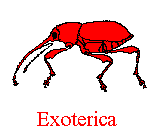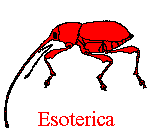One of the several meanings of cacemphaton (also deformitas, Greek κακέμφατον) is an inadvertent obscenity found at the junction of two words. As H. Lausberg puts it (Handbook of Literary Rhetoric, Brill 1998, § 1070), “A special kind of amphibolia, also conflicting with the πρέπον (cf. § 1057), is obscene ambiguity, which is deliberately created in certain literary genres and in the vulgus (Quint. Inst. 6.3.47), but which may also creep in unintentionally, and thus have a shocking or ludicrous effect, depending on the disposition of the audience. Unintentional, but recognizable obscene ambiguity is called κακέμφατον (Quint. Inst. 8.3.44). It may be brought about in two ways: 1) by obscene metaphors; 2) by a change of word boundaries.” As an example of the latter, Quintilian (loc. cit.) recommends that a speaker say cum hominibus notis rather than cum notis hominibus, since the latter has cunno embedded in it. Similarly, Servius objects to glauca canentia in Vergil (G. 2.13), presumably for the ca-ca. (He doesn’t seem to notice that his own word cacemphaton includes a first-person subjunctive cacem.) I’m surprised Lausberg does not refer to Cicero’s well-known letter to Paetus (Ad Familiares 9.22 = 189 SB), where the last two examples in § 2 proving the Stoic view that there is no obscenity in verbis are cacemphata.
To get to my point, I’m wondering if there is a word for the opposite of this: a ghost word that appears in the junction of two or more syllables that is appropriate to the context and might be taken as a comment on it. Specifically, when I read Horace’s description of Procne or Philomela (it’s not clear which) in C. 4.12.7-8,
quae male barbaras
regum est ulta libidines
I can’t help hearing stulta in est ulta. This seems an appropriate adjective for someone who would kill and cook her own children (or even nephews) and feed them to their father, even after the grossest provocation. The fact that est is prodelided makes the pronunciation regum’st ulta almost indistinguishable from regum stulta. Am I right in finding such an embedded comment? Is such a thing found elsewhere? If so, does the figure have a name? If not, what should we call it? The most natural opposite of cacemphaton would be calemphaton. Would that do?


